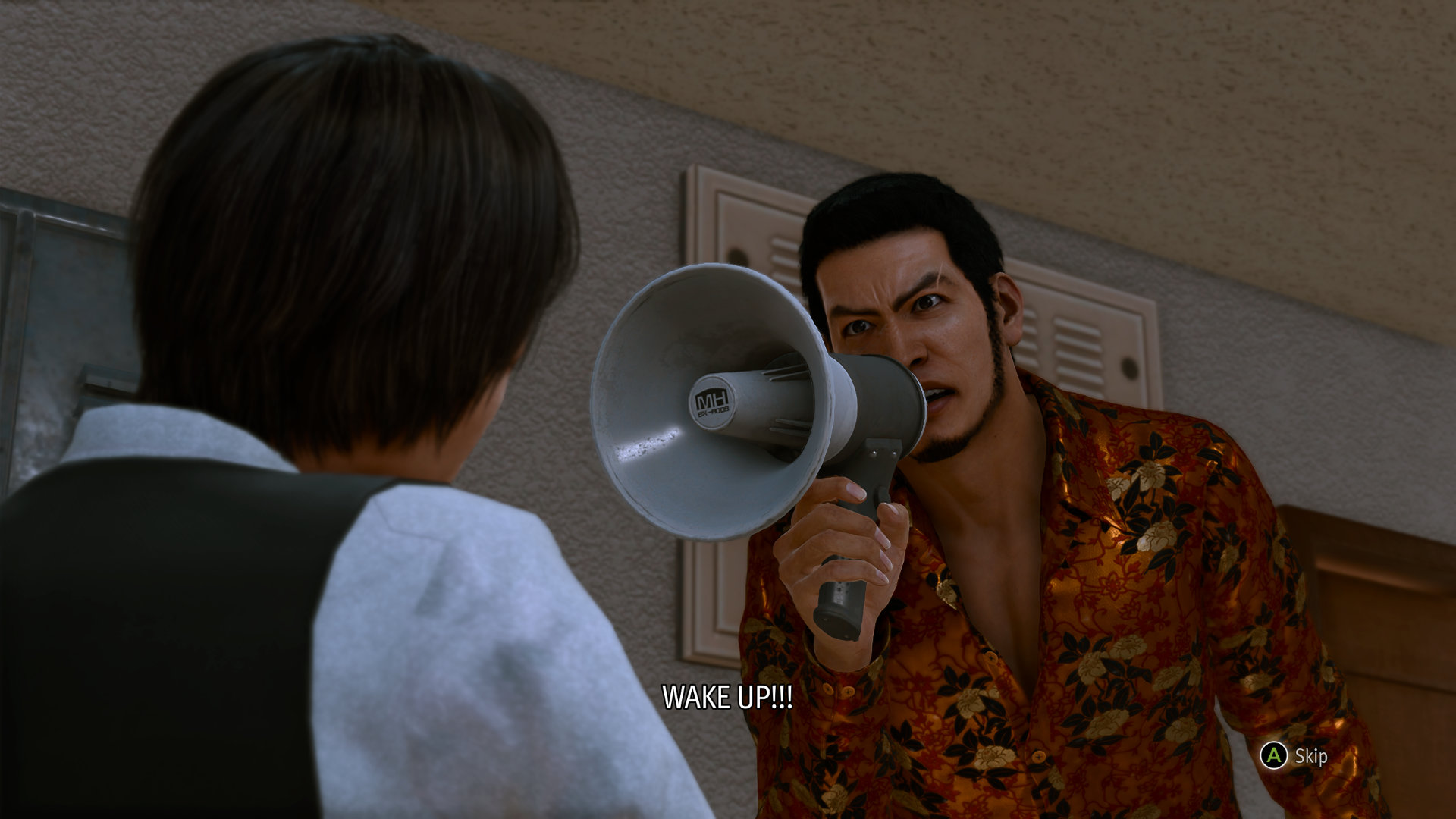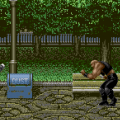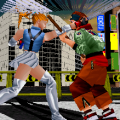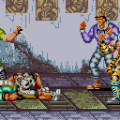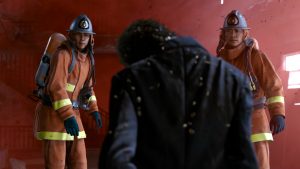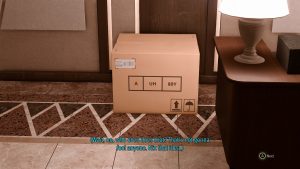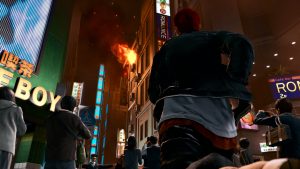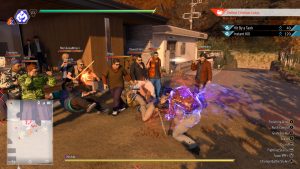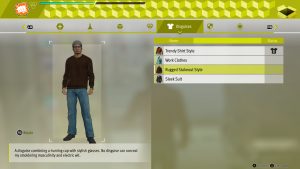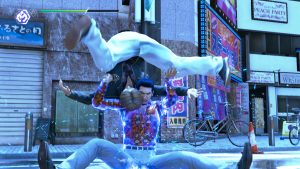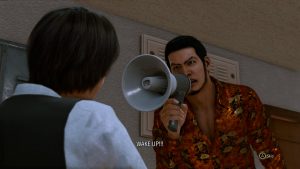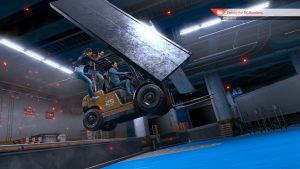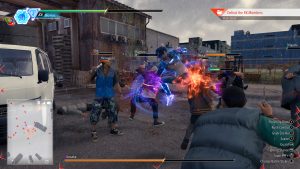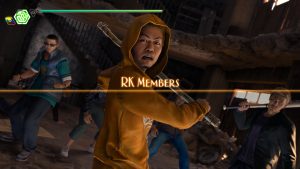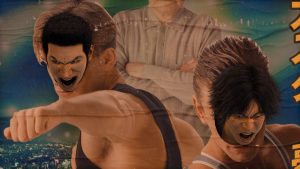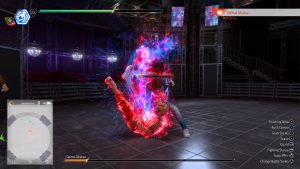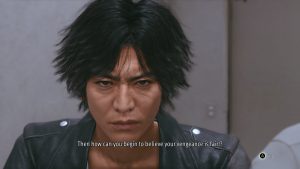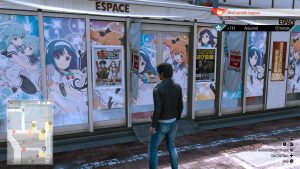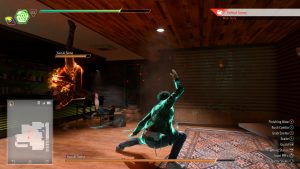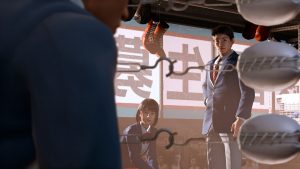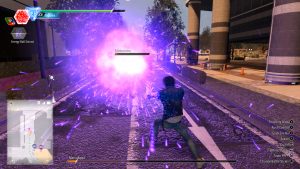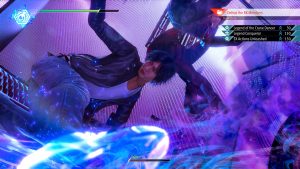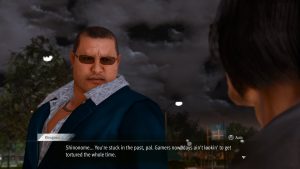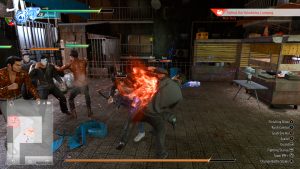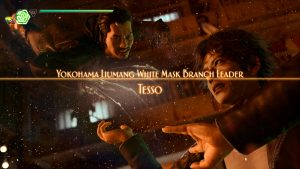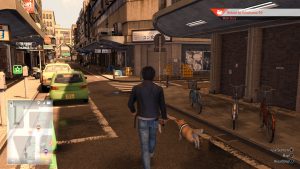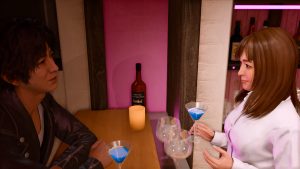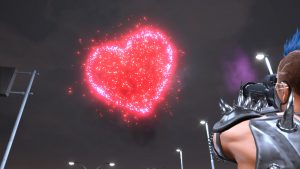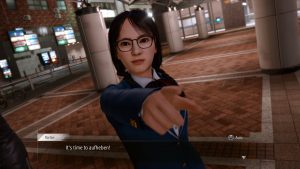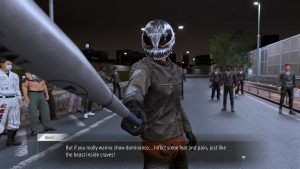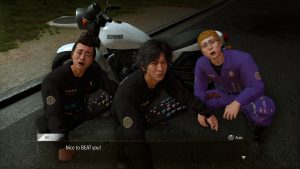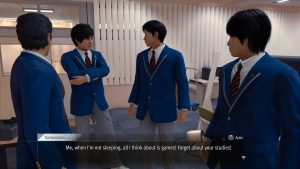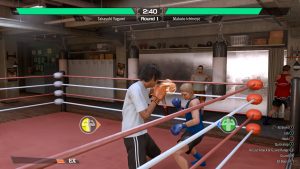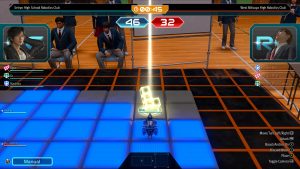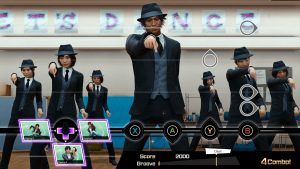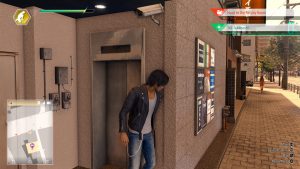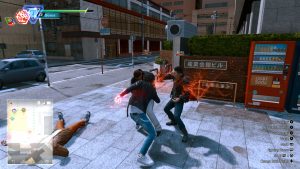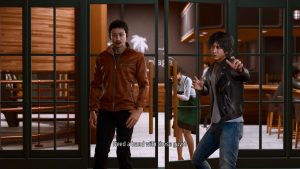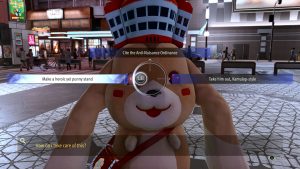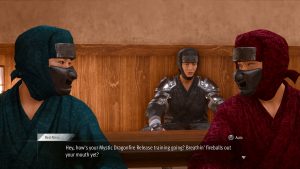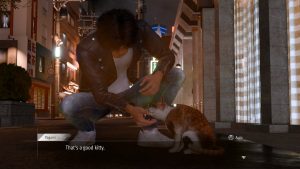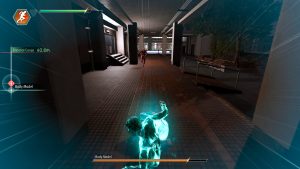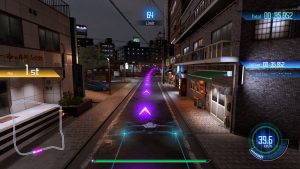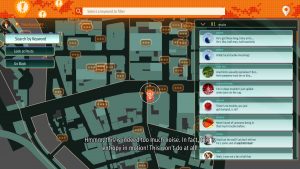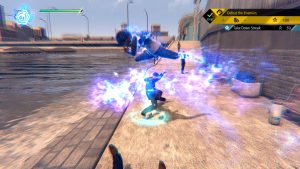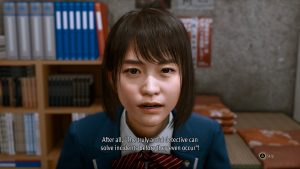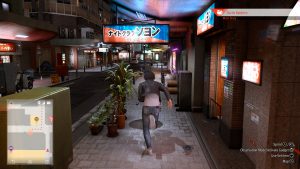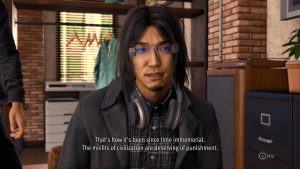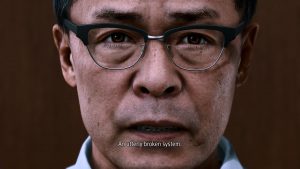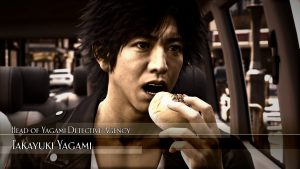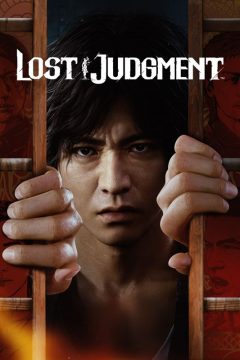
Lost Judgment opens with two firemen in Yokohama investigating what they thought was a fire, but was actually a prank with some flairs. Thing is, some of the flairs were made up to form an arrow and point inside an abandoned building, to where a tarp is found…and a body under it, tied to a chair, maggots crawling around the rotting flesh.
We then have a jaunty case with Yagami and Kaito in the prologue just after this, getting catch up on where everyone is.
At the same time, we see the end of a trial for a police officer caught molesting a woman on a train, a case where Yagami’s old co-worker Saori has been acting as the defense attorney. The client, Akihiro Ehara, has been acting like this has all been a farce, seemingly waiting for the guilty verdict.
Thing is, he also says something strange, as if he’s been excited for this.
When he goes up to give a final statement, Akihiro Ehara states that a body should have been found three days ago in Yokohama.
That corpse was a man named Hiro Mikoshiba – the man who drove his son to suicide four years ago.
He was never formally accused of his crime and received no punishment.
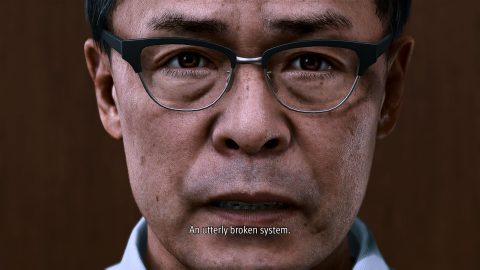
The courtroom is confused and starts to whisper in a panic as Saori starts to realize what just occurred.
Then, Yagami and Kaito get a new job from some friends from the last game who started their own agency…in Yokohama.
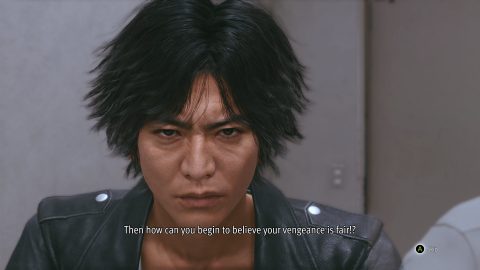
Lost Judgment starts off with confidence and a lot of hype and promises, and it manages to actually meet just about all of it. A far darker story, a more engrossing mystery, and a much more engaging battle of wills and morals, all revolving and beginning with the cruelty children can inflict upon each other. It is better than the original Judgment in almost every way, though this has the unexpected effect of making its few shortcomings stick out more.
Right off the bat, there have been huge improvements to just about every gameplay system. Tiger is relatively similar, while crane style is no longer as situational, offering speed boots, a cool hanging jump with dodge and attack options, and better flowing hits. Yagami also has a new style called snake, which lacks speed or power, but has a full body parry (similar to Tanimura in Yakuza 4) and plenty of great throw options. You also have a new EX skill called EX surrenders in snake style that can be used on scared enemies to instantly remove them from fights, sans bosses and major enemies. Add in the near instant style changes and the DLC’s speedy boxing style, and you have a ton of options to mess with. Even deadly attacks are a fun addition now, with a dodge window that lets you do a super satisfying big damage counter, and the loss of max health damage.
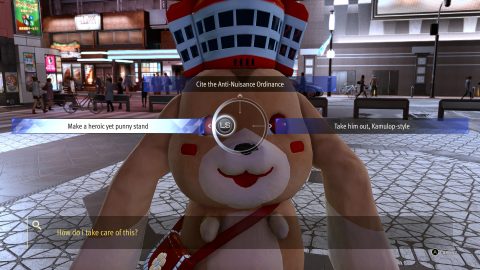
Most of the game now takes place in Ijincho from Yakuza: Like A Dragon, a far larger map. To make up for that, Yagami can now use his phone to order a taxi anywhere at a mark up, like in Ichiban’s adventure, and gets access to a skateboard. Yagami also has some new gadgets to spice up detective gameplay, including a listening device, a bug tracker, and even a dog that can find hidden items. A few mechanical ideas from the first game have also been tweaked, like a more robust tailing system, a more forgiving photo op mode, and chases adding some gimmicks to speed up the process beyond successfully dodging obstacles.
The two additions to this side of the game are a bit more mixed. Yagami’s cutscene parkour is now used in set segments of the game, giving you little jungle gyms in the environment to find your way through. These work well enough, while the stealth segments are more frustrating than anything. They’re extremely on rails affairs with no room for experimentation, unlike tailing, and have instant loss states at being spotted. The Kaito Files DLC does improve on them, though, instead letting Kaito knock out a guard at the cost of a chunk of health, which you can heal if you have items on hand.
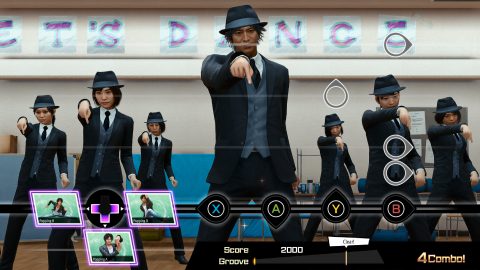
The core systems are otherwise basically what you remember with a lot of fine tuning, but there is one massive new addition for side stuff with school stories. After the first two chapters, Yagami ends up becoming a councilor at Seiryo High School’s Mystery Research Club in order to have the right to be on school grounds for him main story investigation. Turns out, however, that the MRC has its own mystery to solve in the form of a dark web site owned by one “The Professor” that seems to be leading students into delinquency. As you go through the main story, you can also visit a set of nine clubs and areas (the tenth, the MRC, locked until the others are finished) to look into various possible Professor related events, five stories being fairly small tales, and the main four being extremely involved.
All of these stories have a unique minigame attached to them. The five smaller ones are mostly there to introduce a casino, offer a basic skateboarding minigame and skate races, some Virtua Fighter 5 bouts, photo op challenges, and a more involved series of trips to a girls bar with four attached side cases. The main four, however, are surprisingly well developed, revolving around teaching a dancing club with some of Yagami’s kung fu tossed in, taking on biker gang leaders in “death races,” helping a robotics club win a huge tournament, and looking into a trouble kid at a boxing gym mostly populated by ex-yakuza.
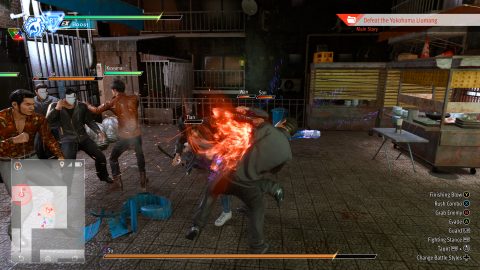
While the dancing club’s rhythm minigame is pretty simple, the other main stories have hours of challenges to work through. Death races have you gaining bikes and upgrading them while taking part in biking brawls and an end race, robotics has you crafting parts and upgrading your team for puzzle bouts, and the boxing gym stuff could be an entire game on its own. Upgrading stats, unlocking new moves, and sparring with the various members with a new and robust combat system never stops being fun, and has an extremely fun final challenge (while the biker gang’s last race may have you go to casual difficulty due to the final races always being pretty heavily scripted). That’s not even getting into the quality of the stories, especially the boxing gym’s well handled exploration of abusive behavior, and with grown men no less.
It is astonishing how much better Lost Judgment feels to play in almost every regard, and how much more it packs in without having to resort to monotonous tasks that the friend events used to resort to. The increased cost of certain skills also means there’s more reason to do side activities for SP. The same goes for combat, which brings back the points bonus system from the likes of Yakuza 0 and older coliseum modes for bonus SP via completing certain feats in encounters. It encourages you to really get into the nitty gritty of the battle system, which is at possibly the most polished the studio has ever managed outside 0 and Kiwami.
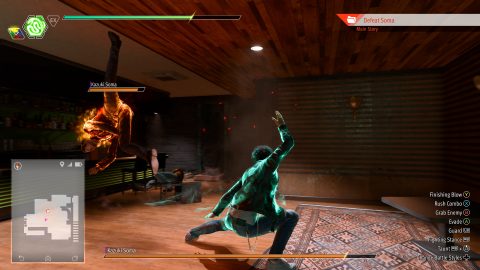
Even the story is a massive improvement. Furuta seems much more comfortable here, re-using some structure from the first game, but fleshing out the parts of the mystery and using it to both have characters have philosophical and moral arguments while still having interesting questions to answer. You figure out who the mastermind is around the halfway point, as before, but the mystery is spiced up by the new gang faction RK, who suddenly burst into the main plot after a seemingly unrelated earlier introduction. Lead by two members of the former Tojo Clan (dissolved at the start of Yakuza: Like A Dragon), they make great antagonists compared to the Matsugane by having a ton of numbers, and their main leader, Soma, being extremely competent and threatening the whole way through. The fact he’s so different from any previous major RGG Studios villain is a cherry on top, backed up by his playfully cruel battle theme Viper. Having this goofy looking man with dust allergies mix a childish melody and scare chords in his theme tells you everything you need to know about him.
The core themes of justice, morality, and the rule of law also hit much harder here. Where Judgment‘s mastermind ultimately felt shallow in his motivations, the game rarely digging into any moral quandaries that came up with what his goals were, we get a very sympathetic set of antagonists here. It ultimately all comes down to the failure of the law to bring justice to victims, Yagami having clarity in seeing the problems with their reactions, but lacking a real answer for the deeper problem. It’s a very interesting set up where every side has an interesting point to think on, with exception to Soma, who still works into the theme of bullying in his simple sadism.
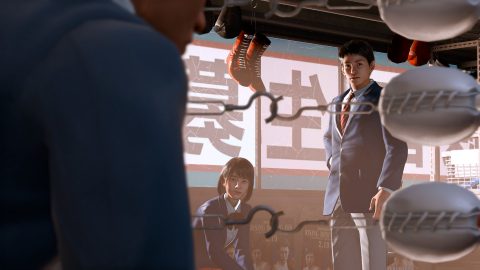
Where we hit a big trip up is with, once again, the writing for female characters. There’s a particularly awful women in fridges part of this game done entirely so two grown men can angst about who’s more sad about the dead woman. There is at least one purpose thematically, showing the cost of the mastermind’s actions as the situation balloons beyond what anyone expected, but there were so many better ways to handle it that didn’t have to default to man being said pretty girl died. Saori also gets it rough here. Despite now being a professional lawyer, the game makes time for two badly handled segments with her as an excuse for her to dress up, the second both being gross in its scenario and confusing in terms of how a relationship she formed in the first game just…doesn’t go anywhere here. It’s like Furuta had no idea to do with a lot of the supporting cast and is relying on old gags to get through it.
The final stretch of the game goes a long way to make up for that, with a ton of brawls where the gang gets together to crack some skulls in possibly the largest fights RGG Studios have ever put together, even in comparison with Kiryu facing down an entire arm of the Tojo in Yakuza 5. It’s another case where the stronger moments help distract from the weaker ones, and there’s a ton of strong moments this time around. If only Furuta wrote his female characters like he does his male ones.
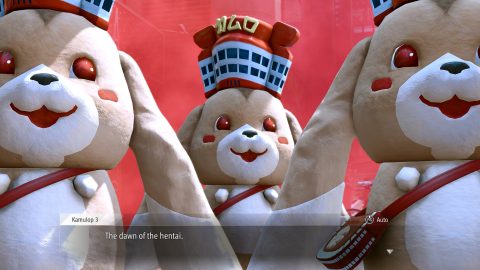
Presentation is roughly the same as before, with some technical improvements for some show-off moments. Same strong dub with lots of returning actors too. The one big improvement in this department comes from the soundtrack, which goes way harder than the last game. Vorarephilia is one of the best regular boss themes in the studio’s library, snake style’s Green Vibes is a bop that will be locked in your brain, RK leader Akutsu’s K.O.G is a blistering, violent dance beat that makes for a very cathartic bout, and the mastermind’s Dig In Your Heels and Unwavering Belief are just straight up some of the best boss tracks you’ll find in any game. The epic nature of Unwavering Belief, in particular, is immaculate. Bonus points also go to the dynamic boss intros, which are way more energetic and numerous this time around.
There was also a DLC campaign released for the game called The Kaito Files, in where you play as Kaito looking into a mystery that may involve an old ex. It’s a wonderfully handled story that’s very tightly handled in its ten hour run time, complete with Kaito fun throwbacks to Yakuza 0‘s brawler and beast styles. The fact his brawler equivalent lets you repel attacks with proper timing was a brilliant idea that makes his fights high stakes and visceral. It’s one of the best written tales the studio has done and well worth the price tag. There’s even fun touches like Kaito using his senses instead of gadgets, or his case and item descriptions being from his perspective, giving a fun bit of ego and exaggeration. The final boss is also extremely satisfying in a way no RGG game has tried before.
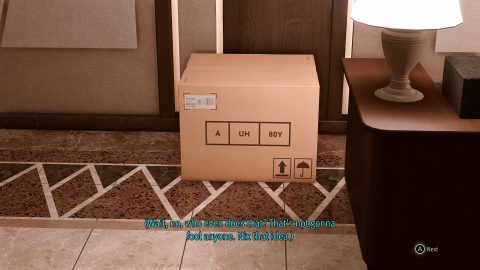
While there’s still some significant writing problems, ones frustrating to see repeated with all the improvements made otherwise, Lost Judgment is definitely some of the best work RGG has done in their action-RPG formula. It’s a meaty, satisfying game that leaves you excited to see what the next entry brings to the table. Now if only Furuta’s issues writing women could be addressed.
